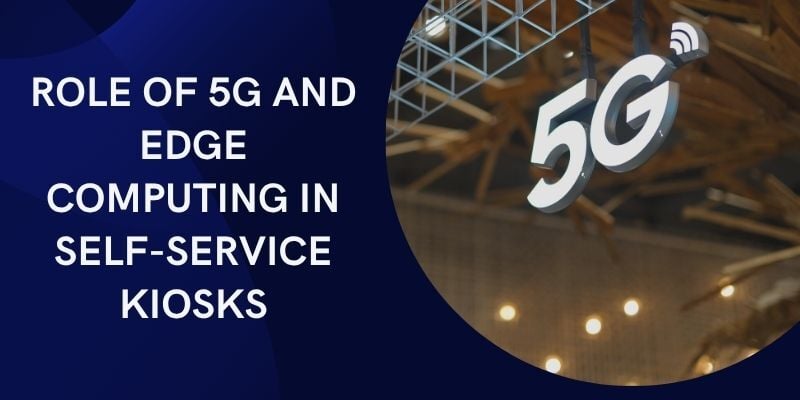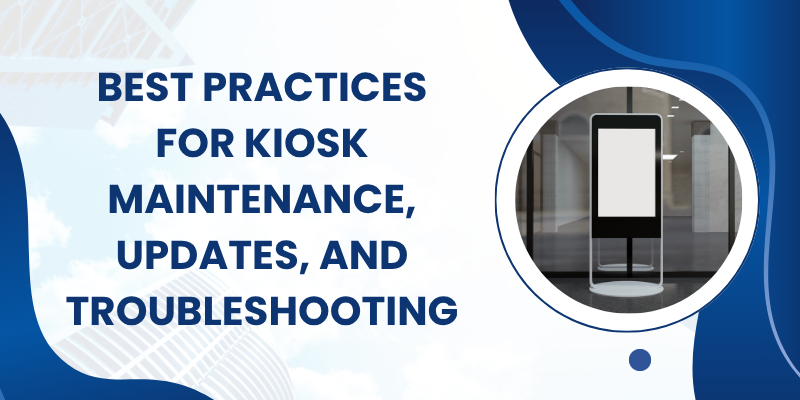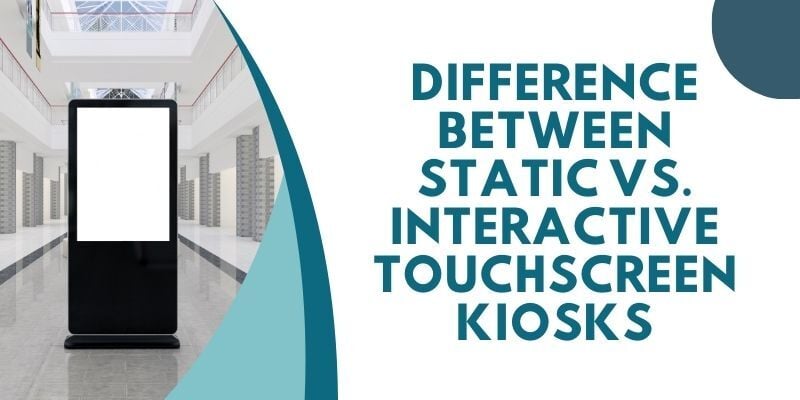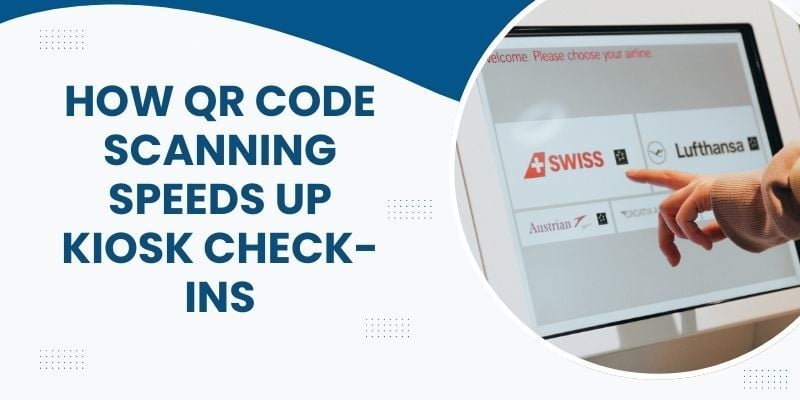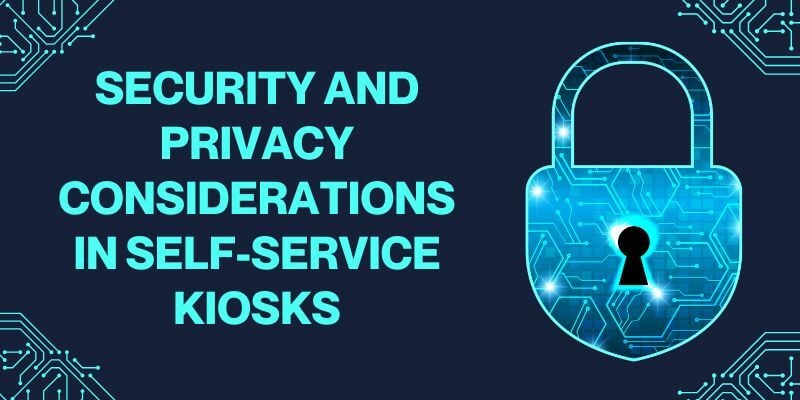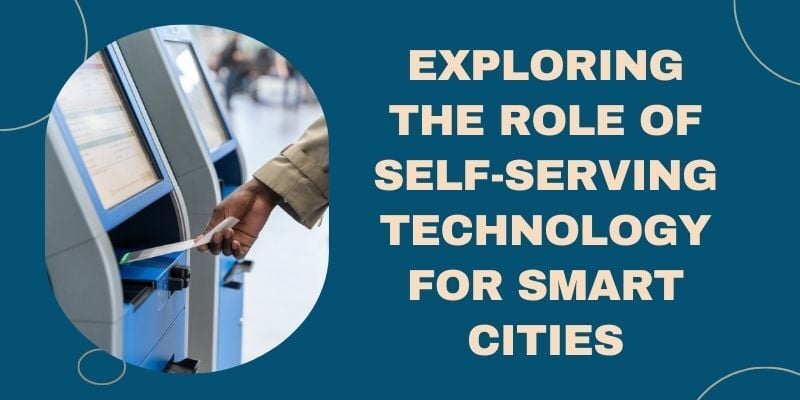Self-service kiosks are interactive, standalone terminals that allow individuals to perform tasks without requiring human assistance. Kiosks allow customers to carry out basic tasks such as accessing information and performing transactions.
Self-service kiosks have gained popularity due to their user-friendly interfaces, like mobile phones. Various industries have tried to understand how self-service technology is changing consumer behaviors in this era.
You will often find kiosks in retail, hospitality and healthcare, banking, and transportation, to name a few. In this blog, we learn kiosks how kiosks provide convenience and the impact of self-service technology on consumer satisfaction.
Statistics and Data
Rapid technological advancements in self-service kiosks have led to a growing market, changing consumer preferences, and the constant need to enhance customer experiences.
Let’s look at some numbers to help you understand the revolutionary role of self-service kiosks:
- Market Research Future has predicted exponential growth in self-service technology, projecting a change from USD 33.2 billion in 2022 to approximately USD 73.8 billion by 2030.
- Forbes research on customer experience concluded that 73% of customers want to solve issues independently, while 67% prefer self-service over speaking to a support agent.
- American Express found that over 60% of US consumers preferred an automated self-service for simple service tasks which could be carried out on a website or mobile app.
The Impact of Self-Service Kiosks on Customer Behavior
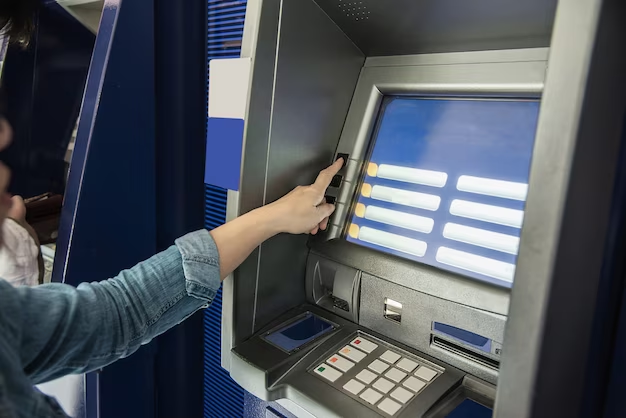
Convenience and Time Savings
How long have you wasted waiting in long lines to checkout or talk to a customer representative? Won’t you prefer going for self-service options that save time?
1. Streamlined ordering process
Customers can use self-service kiosks to ease the process of placing orders. Customers do not have to wait in long queues or rely on staff members for help. They can simply navigate the user-friendly interface, select their desired items, and complete their order.
This eliminates the need to communicate with the staff, thus minimizing the chances of inaccuracies. Customers can browse the menu on kiosks and accurately add instructions.
For example, quickly ordering at a fast-food restaurant at a kiosk with just a few taps is very convenient.
Quick service in restaurants, banks or retail stores yields higher turnover rates. It is fast, hassle-free, and gives customers complete control over their preferences, elevating their experience.
2. Reduced waiting time
Let’s face it, if customers see long waiting times at checkout counters, they are likely to walk out of your store. Self-service kiosks will help you tackle this issue head-on.
Empowering customers to place orders or perform transactions at kiosks independently eliminates the extra time spent waiting for a representative. Customers can complete the required tasks, such as paying for groceries, receiving tickets to reserve a spot, or checking in at a hotel.
Bypassing the traditional checkout lines is a valued tool you can offer your customers. With minimal wait times, there is reduced queuing anxiety. Customers do not have to worry about fighting for a spot in the line. They can explore the facility thoroughly, leading to higher sales.
Empowerment and Control
1. Customization options
Self-service kiosks allow customizations to the options that can easily cater to customers’ preferences. Customers can personalize their orders, select specific features, add instructions or tailor the services to meet their unique needs.
This level of control gives customers more control over their orders than placing an order at the desk. Make your customers feel empowered to personalize their orders at the kiosk.
2. Self-paced browsing and decision-making
Self-service kiosks display information in an organized manner, categorized under menus. This allows customers to explore products, services, or information at their own pace without feeling rushed.
Customers feel at ease because they can compare and contrast options, access detailed specifications, or view additional content per their interest.
For example, kiosks at a retail store allow customers to browse an extensive catalogue along with product images, check available quantities, and even see suggested accessories.
This autonomy allows customers to make decisions without external pressure from staff. Customers leave the store feeling more confident and satisfied after taking the time to explore and decide.
Changing Expectations
1. Shift towards self-service options
It turns out that there has been a dramatic shift in trends from traditional checkout options to practising self-service in daily business routines. Research suggested that over 80% of GenZ and Millenials prefer visiting a restaurant with self-service kiosks.
The ease of using technology in everyday tasks has largely governed this shift. Businesses have not only met customer expectations but also enhanced their overall experience.
2. Preference for technology-driven interactions
Introducing self-service kiosks asks customers to play the role of a staff member. But why is it that customers now prefer self-service options?
Customers are embracing opportunities to use technology to independently complete tasks such as placing orders, purchasing, or accessing information. Individuals prefer carrying out these tasks at their own pace and suitable time.
Additionally, self-service kiosks allow customers to bypass long queues and receive prompt service tailored to their needs. Shoppers now have the freedom to scan and pay for their items on their own, avoiding the hassle of waiting in line at a traditional checkout counter.
Self-service kiosks bring ease and convenience into daily chores. The technology of self-service kiosks comes with touchscreens which are easy to use, thus providing a familiar and user-friendly experience.
The Influence on Purchasing Decisions
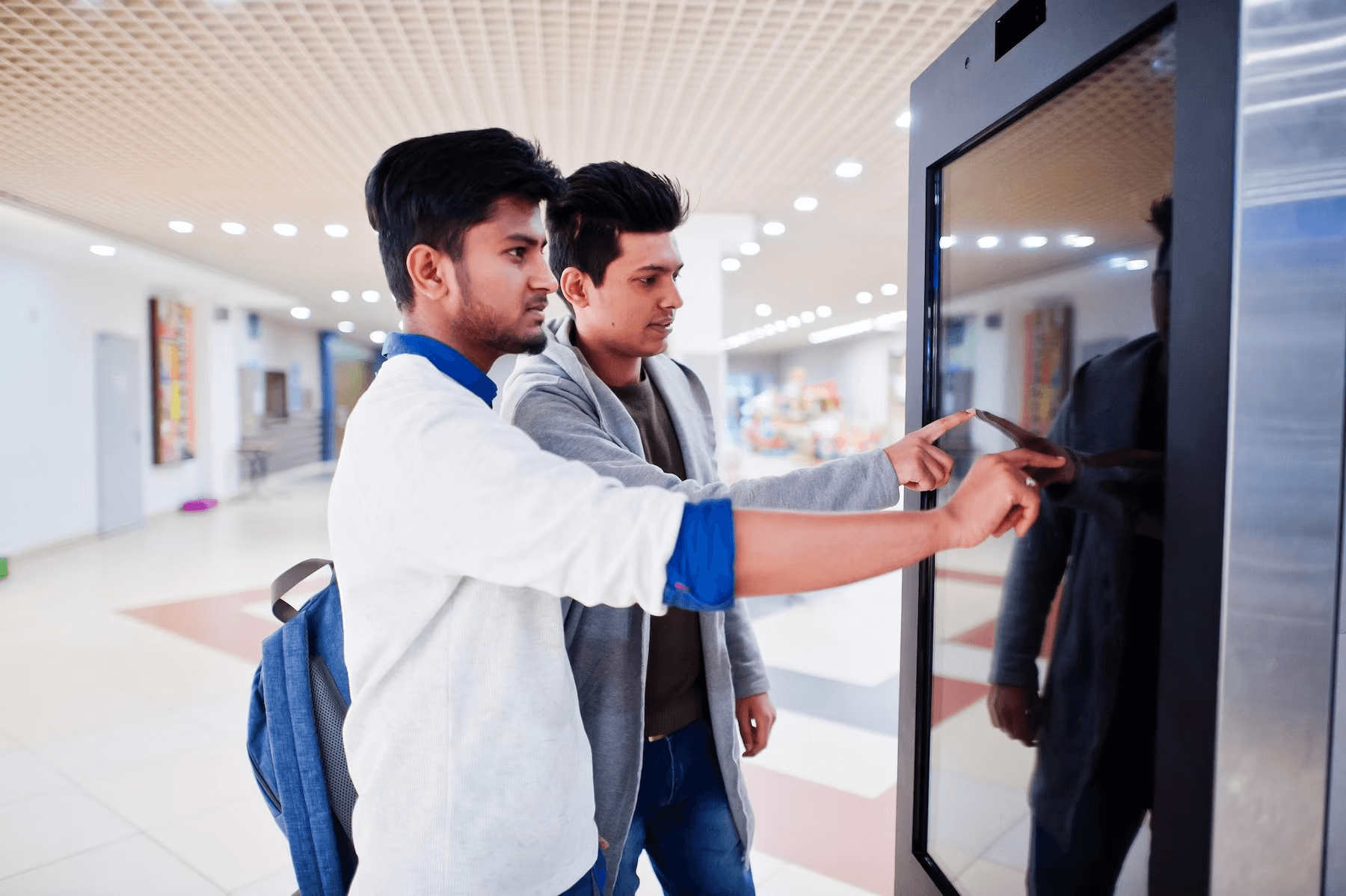
How likely are customers to explore various options and discover new products when presented with interactive displays and engaging visuals?
Visual Appeal and Engagement
Aren’t we all attracted to aesthetically pleasing and organized displays that influence our purchasing decision?
1. Interactive displays and visuals
Interactive displays and visuals on self-service kiosks attract customers and make the experience more dynamic. Customers can actively engage with the kiosk by exploring product options, comparing features, and customizing their choices.
The interactive nature of these displays encourages customers to spend more time exploring. For example, a makeup retailer’s self-service kiosk allows customers to try on different products and enjoy an immersive experience virtually.
2. Product information and recommendations
Self-service kiosks offer valuable product information and recommendations to assist customers in making informed decisions. These kiosks can display detailed specifications and customer reviews and suggest complementary products or alternatives.
Relevant information from self-service kiosks empowers customers with knowledge and helps them make confident purchases. Self-service kiosks can showcase specifications and comparisons of different products, aiding customers in selecting the most suitable one.
Upselling and Cross-Selling Opportunities
1. Personalised suggestions
Self-service kiosks can collect customer data and analyze consumer behaviour. You can use it to offer personalized product recommendations and suggestions. By analyzing previous purchases or browsing history, kiosks can understand customers’ preferences and make tailored suggestions.
A personalized approach makes customers feel valued by your company. It enhances the customer flow and increases the likelihood of additional purchases.
2. Promotions and incentives
Self-service kiosks display promotions and offer incentives to customers. These kiosks can display limited-time offers, bundle deals, or loyalty program rewards. Kiosks help to grab customers’ attention and encourage them to explore additional products or services.
The biggest benefit of self-service kiosks is the increase in the average transaction value of an order. Encourage customers to try new items they might not have considered otherwise.
Order Accuracy and Satisfaction
1. Reduced human error
How often have you received incorrect orders due to an error in conveying messages to the representatives?
Self-service kiosks help reduce human error in order processing. When customers place orders through a kiosk, they choose the options themselves. Therefore, there are minimal chances of miscommunication and misunderstanding as in manual order-taking.
2. Order customization and accuracy
Self-service kiosks are beneficial in boosting customer satisfaction by allowing customization. This significantly reduces misunderstandings, increasing order accuracy.
Industries Embracing Self-Service Kiosks

Retail Sector
1. Self-checkout kiosks in supermarkets
Various industries have emerged in favour of installing service kiosks, of which retail stores have benefitted the most.
Retail stores prefer self-checkout kiosks to help customers quickly grab what they want with an independent checkout process. Weighing products, scanning and paying on their own gives them a sense of autonomy.
Customers may spend a limited time in-store, but it encourages them to return frequently owing to the fast service.
2. Apparel and fashion industry
Wouldn’t it be exciting to try on various outfits virtually to ensure a perfect fit before purchasing?
The apparel and fashion industry is helping customers do just that with self-service kiosks. Clothing stores have kiosks for customers to browse inventory before going around the store. They can also place orders for out-of-stock items.
With virtual try-on rooms on kiosks, you can personalize your shoppers’ experience by letting them try multiple colours. This interactive experience allows shoppers to make more informed purchase decisions while having fun experimenting with different styles.
Hospitality Industry
1. Self-service check-in/out kiosks in hotels
The best way to comfort your guests is to help them check-in/out during peak travel season. Hotels, therefore, are investing in kiosks that allow them to skip long lines. Kiosks allow guests to retrieve hotel booking details, select available rooms, add preferences, and receive room keys.
2. Ordering and payment kiosks in restaurants
Restaurants have automated the ordering process for customers to punch accurate details. They can immediately pay at the kiosk or receive tokens to wait in lines. This helps them handle high-volume orders during peak hours.
Transportation Sector
1. Ticketing and boarding kiosks at airports
Individuals can use a kiosk to select their flight, enter information, and print their boarding pass. The process is quick and seamless and helps omit long waiting queues. The customization option allows passengers to choose their seat, priority check-in and opt for upgrades.
2. Self-service ticket purchase in public transportation
Passengers can breeze through the ticketing process for public transport using the ticketing kiosks. Besides this, kiosks display information on the map, available routes and timings.
Case Studies and Success Stories
McDonald’s Self-Ordering Kiosks
McDonald’s was among the first restaurants to adopt self-service kiosks for increased order accuracy and speed. Customers can independently place their orders using kiosks, reducing the chances of miscommunication.
This improved order accuracy and allowed faster service. The benefits of self-service kiosks include streamlined operations, reduced wait times, enhanced customer satisfaction, and increased efficiency for businesses.
DMV Stations
The Tennessee DMV adopted Wavetec’s virtual ticketing and appointment solution to enhance customer service and reduce wait times. These self-service kiosks allowed customers to receive tickets to reserve a spot in the waiting line management system.
Additionally, customers could complete time-consuming tasks such as renewing vehicle registrations and updating personal information. Self-service kiosks offer customers shorter wait times. There is increased convenience with multilingual support and accessibility features.
Future Trends and Innovations
1. Integration with Mobile Devices
Given the regular use of mobile phones, integrating kiosks with apps has become necessary. This includes customers using mobiles to scan product barcodes and check prices. It allows the integration with bank apps to pay directly at a kiosk without carrying cards.
2. Artificial Intelligence and Personalization
Kiosks are equipped with AI-powered algorithms which integrate facial and voice recognition. It also analyzes data to study consumer behaviour. This helps provide personalized product recommendations based on customers’ previous purchases or browsing history.
Frequently Asked Question
How do self-service kiosks benefit businesses?
Self-service kiosks offer businesses increased efficiency and order accuracy, reduced labour costs, and upselling opportunities. With self-service kiosks, you can collect valuable customer data and integrate it with existing point-of-sale systems.
Are self-service kiosks replacing human employees?
Self-service kiosks are not intended to replace employees. Instead, the goal is to aid human employees and complement their role in the company. Kiosks help automate repetitive tasks, allowing human employees to focus on complex tasks and engage in conversations.
What industries are adopting self-service kiosks the most?
Other than kiosks in banks, retail, and the food industry are investing in self-service technology. Retail stores automate checkout and product information lookup, whereas quick-service restaurants use it for order customization and payment.
What security measures are in place to protect customer information?
Since protecting customer information is a priority, self-service kiosks use secure networks and data encryption algorithms. To ensure compliance with the General Data Protection Regulation, kiosks offer security PINs, passwords, and video surveillance options.
Conclusion
Are you willing to be a part of the revolutionary shift of installing self-service kiosks?
Transform the way your customers interact with your company. Offer shorter wait times, personalized recommendations, and self-transactions.
Contact us today to implement the impact of self-service technology on consumer satisfaction.
BOOK A FREE DEMO
